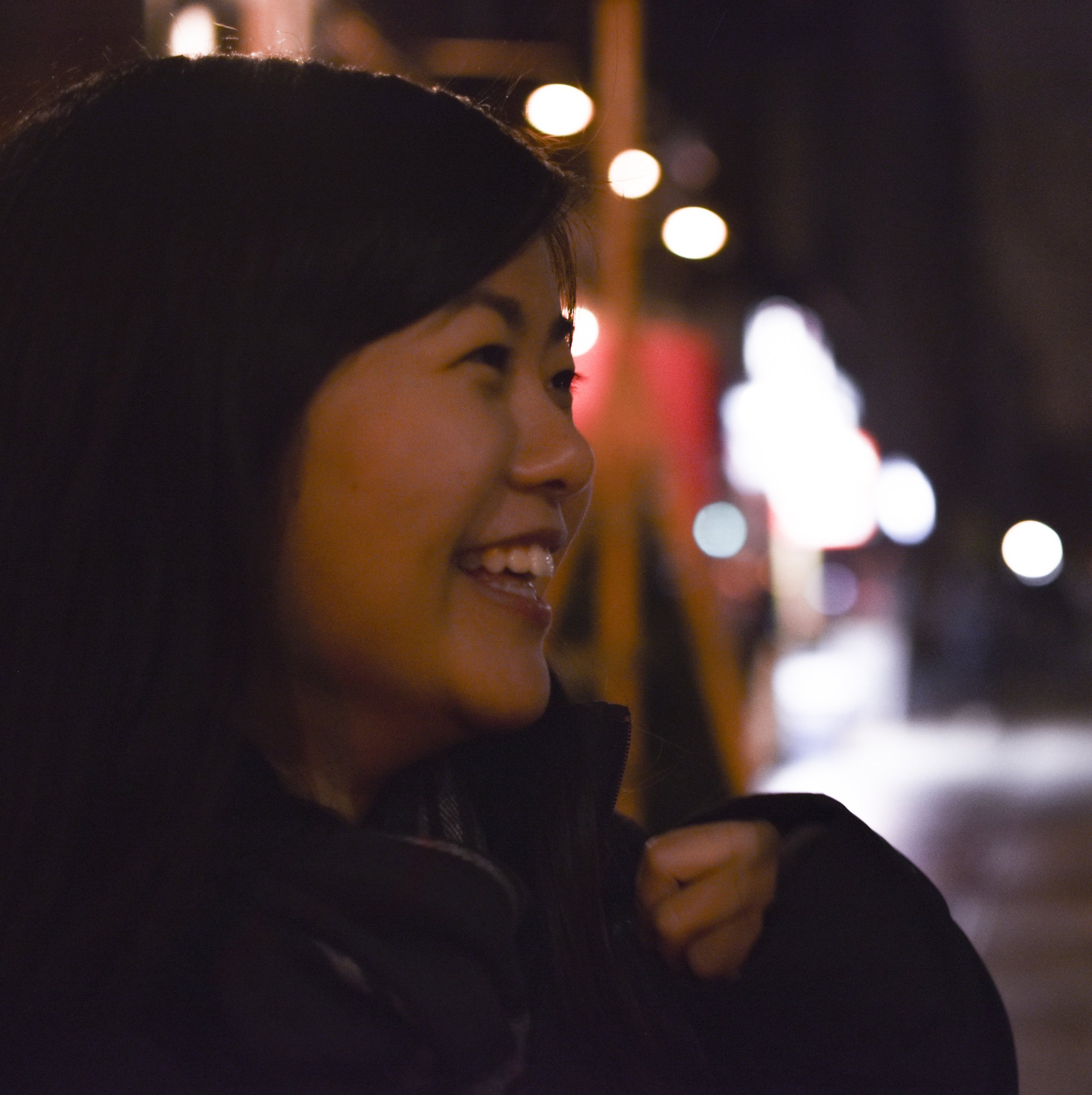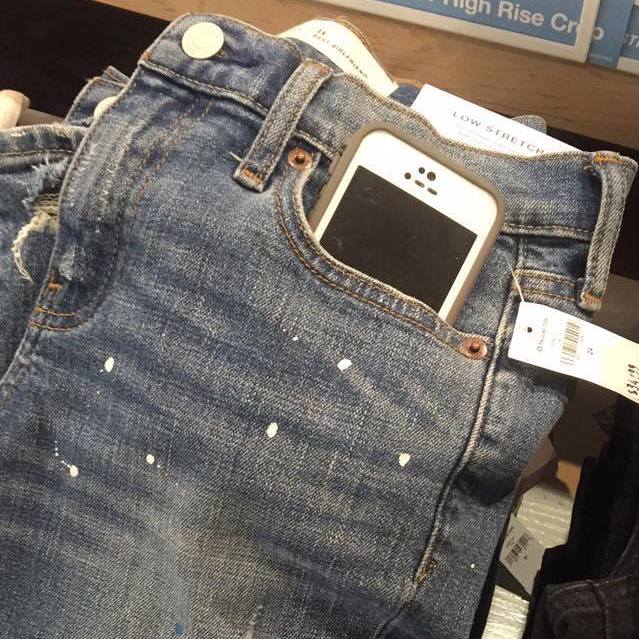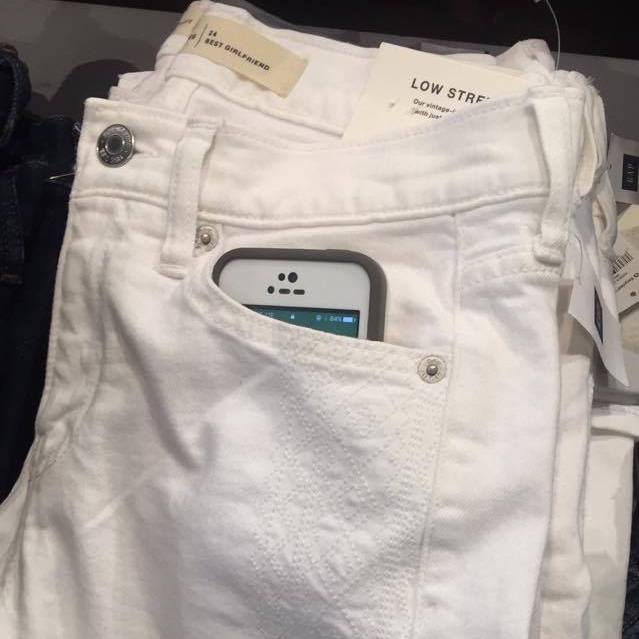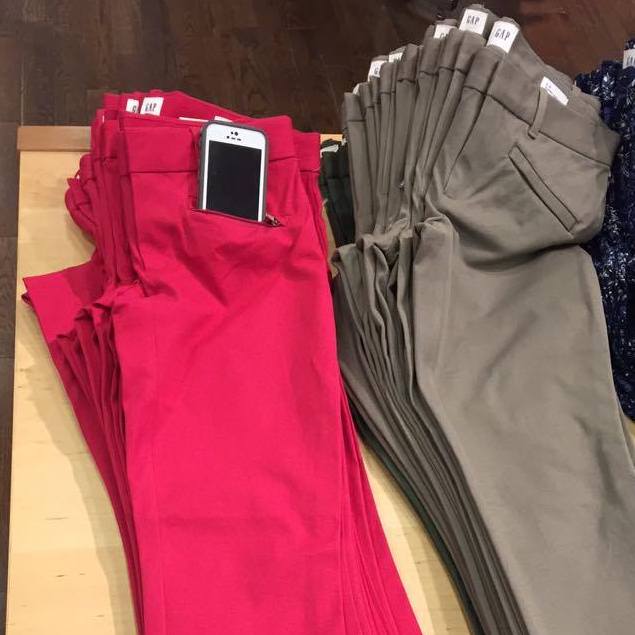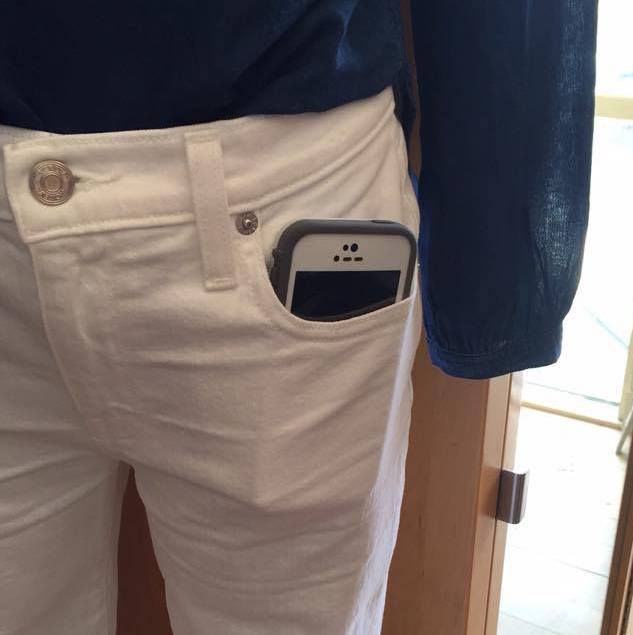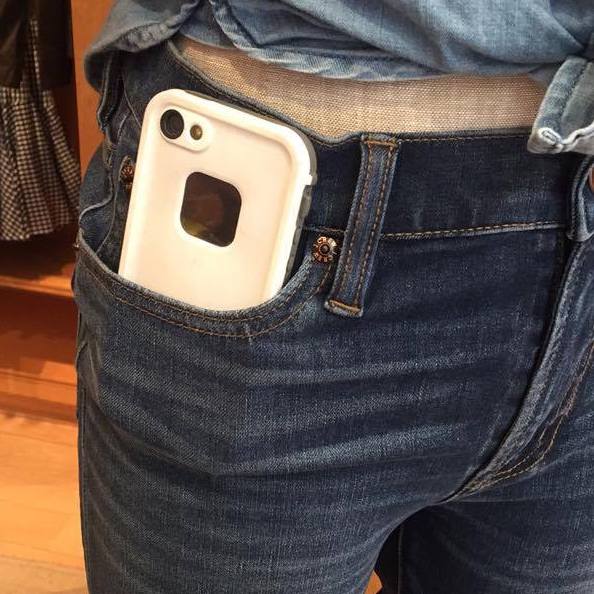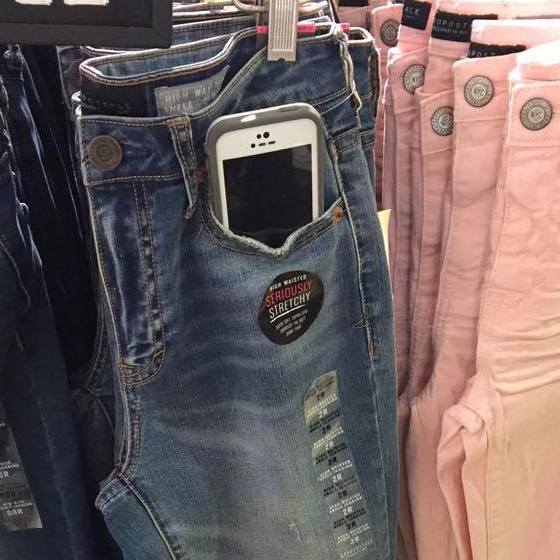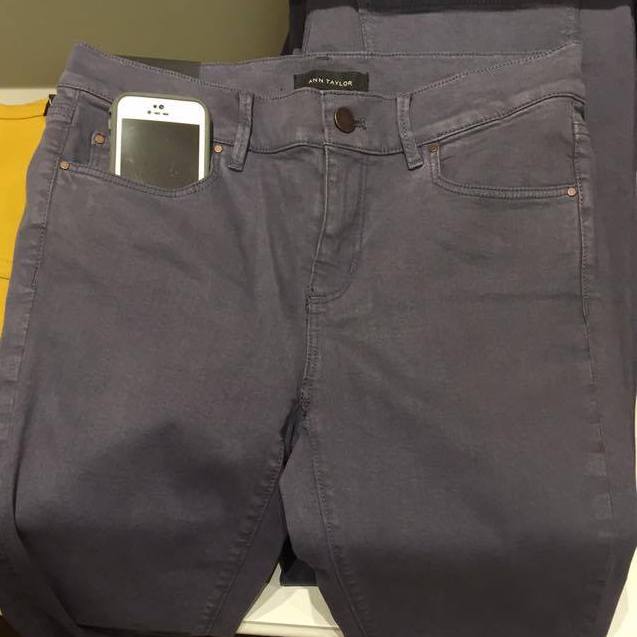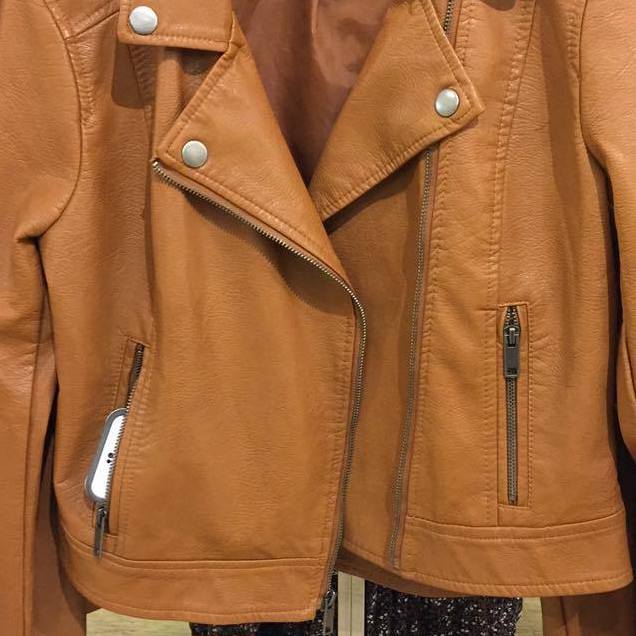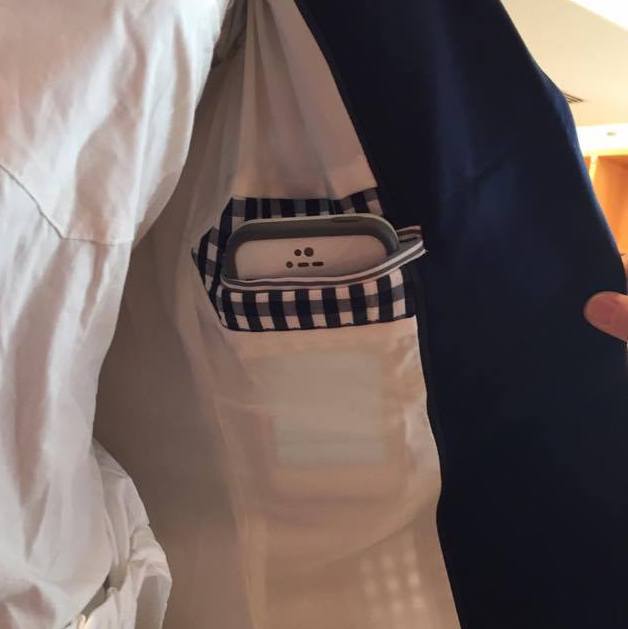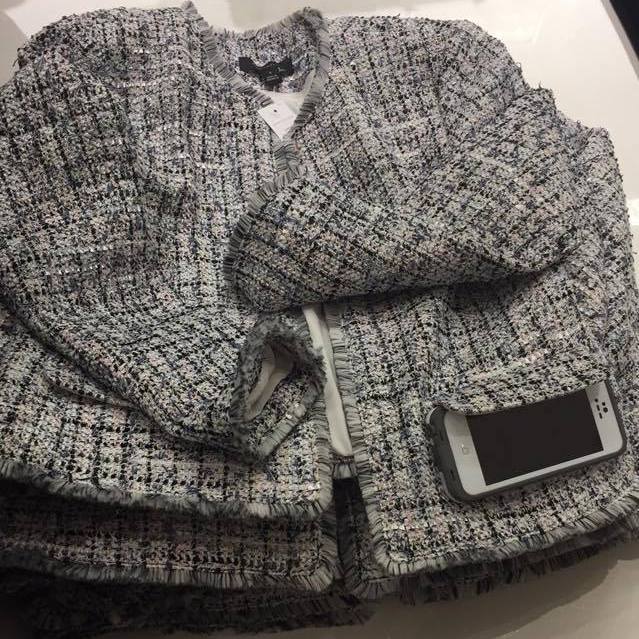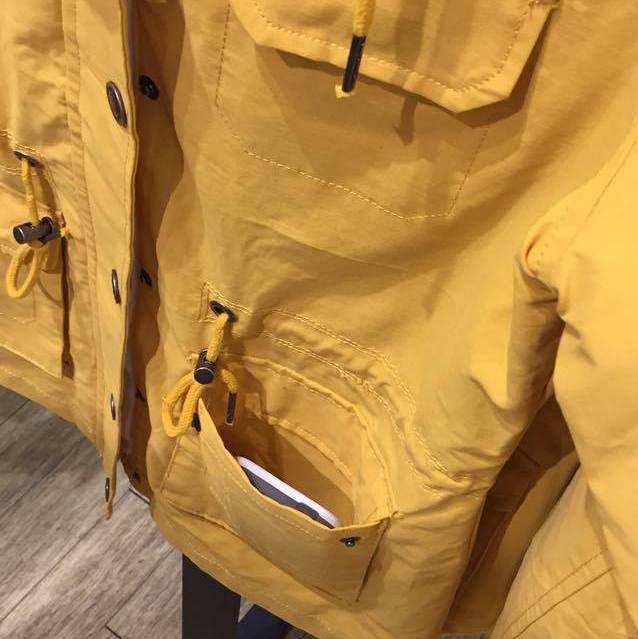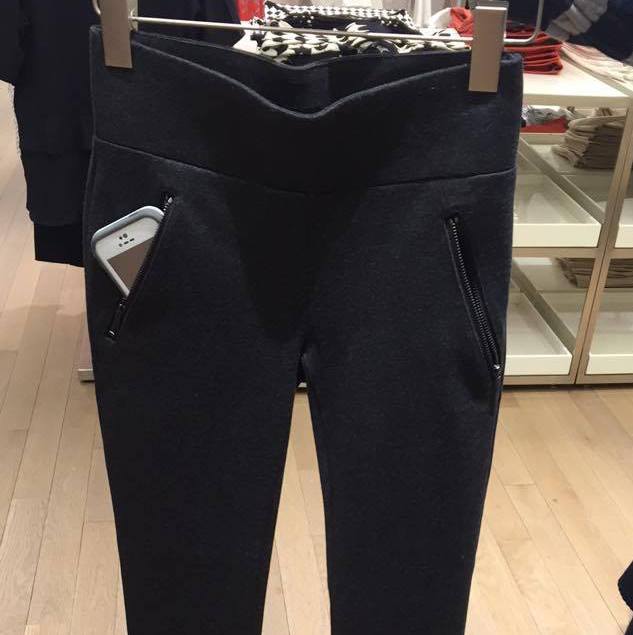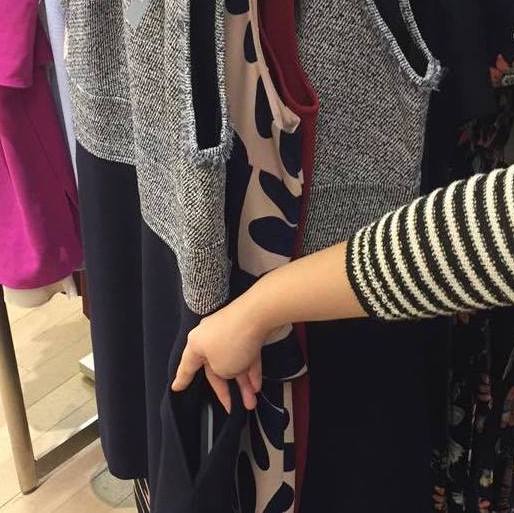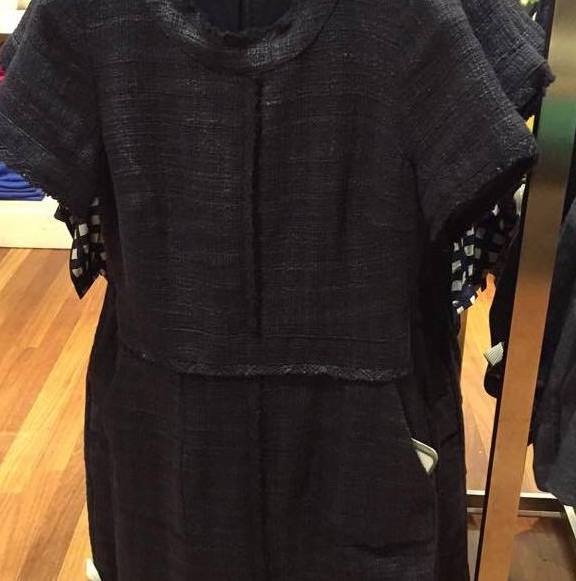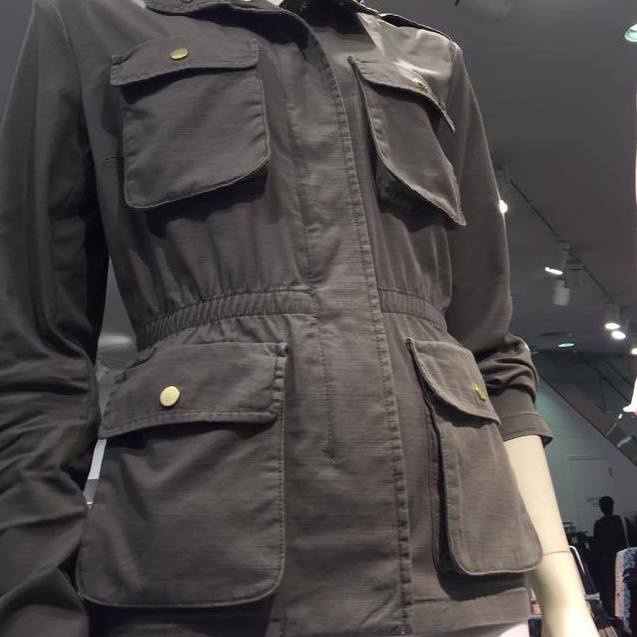Team Pocket (Project with Distinction)
ENG-SCI 22 Design Survivor: Experiential Lessons in Designing for Desirability
Design Prompt: Conduct field research on a consumer product and design an alternative that offers better solutions to unsolved problems
Timeline: 2 weeks
Collaborators: Yaara Yacoby, Alice Yang
Problem at Hand: Compared to men’s clothing, women’s clothing tends to have smaller pockets that are barely functional, if they are present at all.
Field Research: We visited CambridgeSide Galleria mall to analyze two kinds of brands: casual – Gap, H&M, and Aeropostale which are associated with teen fashion and lower prices, and business – J. Crew, Banana Republic, and Ann Taylor which are associated with quality and prestige.
Findings:
Blazers
The blazers at J. Crew, Banana Republic, and Ann Taylor tend to have smaller pockets so as to maintain the shape of the garment. Pockets are often sewn shut when sold and some pockets couldn’t fit a business card or passport.
Utility / Travel Jackets
At H&M, Gap, and Aeropostale, the pockets are not only visible but quite spacious. There are sometimes multiple interior pockets as well. However, this type of pocket visibility is a more recent trend in fashion and is associated with younger buyers, therefore not as present in the more "sophisticated" brands.
Jeans
We did not try on the pants for fit, but instead tested the pockets with an iPhone 5. Only the "Boyfriend Jeans" from Gap, sporting a casual and loose fit, was able to fit an entire iPhone into the front pocket. The pockets of several jeans we encountered were not deep enough to fit a credit card. We also found the tighter the jeans are, the more likely they would have shallower or “fake” pockets, such as those in jeggings (jeans + leggings).
Dresses
For brands such as Gap and Aeropostale, dresses often come with pockets along the seam, which doesn’t affect the overall shape. For more formal brands such as J. Crew, Banana Republic, and Ann Taylor, their dresses often had no pocket. However, when they did, those pockets were also positioned along the seam and hidden from view.
Targeted Approach:
With all these clothing types, we decided to focus on jeans pockets, as the lack of functional front pockets is particularly frustrating. We were also inspired by this pair of creative entrepreneurs. We went to Garment District and picked up a pair of jeans with inadequate front pockets. Here is a photo of attempting to fit an iPhone 5.
Initially, we had a few ideas:
To extend the existing front pockets and create more depth
To replace the pockets with multi-depth pocket where one can choose how many seams to open and customize depth
To redesign boots and other footwear to create pocket space for phones
We went with the first idea. The second idea was more difficult to prototype, and the third idea was restrictive in terms of the types of footwear.
Pocket Design Matrix
Pocket Designs:
Back on campus, we studied the various types and openings of pockets from the pictures we took on the trips. The pockets we encountered had 3 kinds of shapes: rectangle, round, and polygon. The openings were either along a seam or on the front. The combination of those two criteria produced the matrix on the left.
Pocket Extension:
For the pair of jeans that we picked up, we decided to extend one of the pockets so that it could properly fit a smartphone. The other pocket is left as original for comparison.
Diagram for Pocket Extension
Diagram for Pocket Extension
Pocket Extension
Original Pocket
Extended Pocket - Phone Fits!
Alternative Pockets:
Additionally, we’ve experimented with different pocket designs and have tested their ability to hold a smartphone.
Other Pocket Designs
Other Pocket Designs + Phones
Future Exploration:
If this were to become a business venture, we could look into DIY pocket expansion kits or providing guides like this one. In terms of marketing, any new smartphone debut is a good opportunity to publicize, as well as to offer in-person service.
